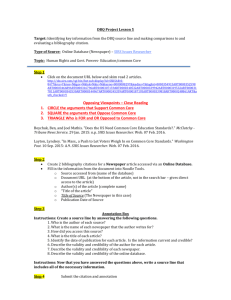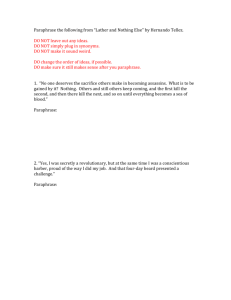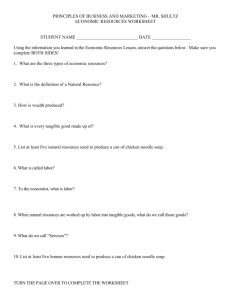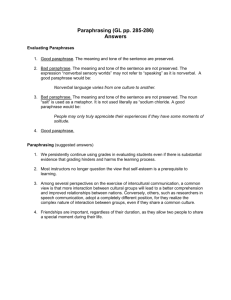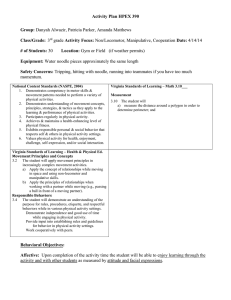DBQ ProjectLessonEnironment2
advertisement
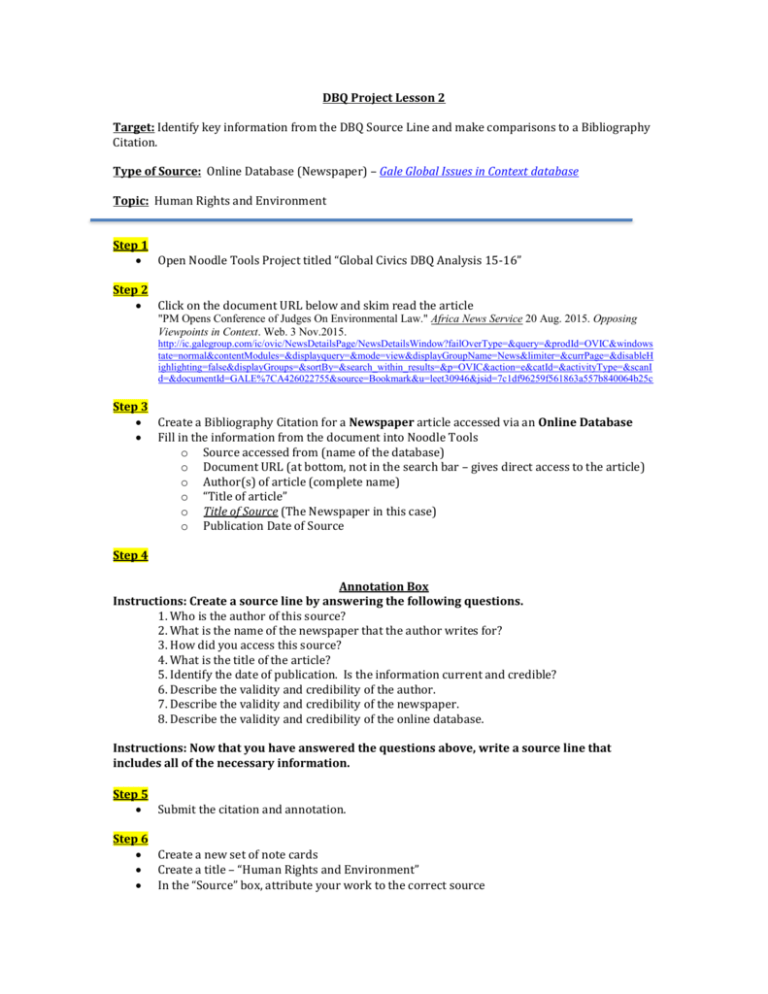
DBQ Project Lesson 2 Target: Identify key information from the DBQ Source Line and make comparisons to a Bibliography Citation. Type of Source: Online Database (Newspaper) – Gale Global Issues in Context database Topic: Human Rights and Environment Step 1 Open Noodle Tools Project titled “Global Civics DBQ Analysis 15-16” Step 2 Click on the document URL below and skim read the article "PM Opens Conference of Judges On Environmental Law." Africa News Service 20 Aug. 2015. Opposing Viewpoints in Context. Web. 3 Nov.2015. http://ic.galegroup.com/ic/ovic/NewsDetailsPage/NewsDetailsWindow?failOverType=&query=&prodId=OVIC&windows tate=normal&contentModules=&displayquery=&mode=view&displayGroupName=News&limiter=&currPage=&disableH ighlighting=false&displayGroups=&sortBy=&search_within_results=&p=OVIC&action=e&catId=&activityType=&scanI d=&documentId=GALE%7CA426022755&source=Bookmark&u=leet30946&jsid=7c1df96259f561863a557b840064b25c Step 3 Create a Bibliography Citation for a Newspaper article accessed via an Online Database Fill in the information from the document into Noodle Tools o Source accessed from (name of the database) o Document URL (at bottom, not in the search bar – gives direct access to the article) o Author(s) of article (complete name) o “Title of article” o Title of Source (The Newspaper in this case) o Publication Date of Source Step 4 Annotation Box Instructions: Create a source line by answering the following questions. 1. Who is the author of this source? 2. What is the name of the newspaper that the author writes for? 3. How did you access this source? 4. What is the title of the article? 5. Identify the date of publication. Is the information current and credible? 6. Describe the validity and credibility of the author. 7. Describe the validity and credibility of the newspaper. 8. Describe the validity and credibility of the online database. Instructions: Now that you have answered the questions above, write a source line that includes all of the necessary information. Step 5 Submit the citation and annotation. Step 6 Create a new set of note cards Create a title – “Human Rights and Environment” In the “Source” box, attribute your work to the correct source Step 7 Direct Quotation Box Instructions: Read the direct quote below. "The duty to protect the environment is not only the responsibility of the state", he added, "but of all citizens, individually or in associations. This is a duty that should be shared between public powers and the citizens". "Our priority is to adopt measures that prevent environmental damage", said Rosario. "It is the responsibility of all governments to guarantee an administration that takes preventive and pro-active measures, through regular inspections of activities which may cause damage to the environment". Social justice, security, and respect for the environment and for human rights "are vital elements for good, democratic governance and the eradication of poverty, and for the provision of basic social services to citizens", he added. Instructions: Answer the question below in the Direct Quotation Box. 1. What is the author trying to say, what is his/her purpose, as related to Human Rights and Migration? Step 8 Paraphrase or Summary Box Instructions: Answer the questions below in the Paraphrase or Summary Box. 1. Describe the argument that is presented by the author. 2. How does the author’s main idea about human rights and migration relate to what we have been talking about in class? Step 9 My Ideas Box Instructions: Answer the questions below in the My Ideas Box 1. Describe the similarities between a Source Line and a Bibliography citation. 2. What are your thoughts about the author’s argument? Explain why you agree or disagree with their point of view? 3. What do you think would be a valid counterpoint to the author’s words? Step 10Open Google Slides presentation Human Rights DBQ Instructions: Follow the step-by-step process below. Create 4 additional slides in your Google Slides Human Rights DBQ Project: 1. Slide 1 – Topic Slide a. You will create a topic slide each time that we look at a new source. b. The topic of this source is Human Rights & Environment 2. Slide 2 – Source Line a. In the Annotation Box on Noodle Tools, you already created a source line, copy and paste that source line into this slide. 3. Slide 3 – Paraphrase a. In the Paraphrase Box on Noodle Tools, you already summarized the main idea of the article. Copy and paste the information from your paraphrase box into this slide. 4. Slide 4 – Argument and Analysis a. In the My Ideas Box in Noodle Tools, you wrote several thoughts about your agreement or disagreement with the author. Copy and paste the information that you wrote in the my ideas box into this slide. i. In the Annotation Box on Noodle Tools, you already created a source line, copy and paste that source line into this slide. b. Slide 3 – Paraphrase c. i. In the Paraphrase Box on Noodle Tools, you already summarized the main idea of the article. Copy and paste the information from your paraphrase box into this slide. Slide 4 – Argument and Analysis i. In the My Ideas Box in Noodle Tools, you wrote several thoughts about your agreement or disagreement with the author. Copy and paste the information that you wrote in the my ideas box into this slide.
